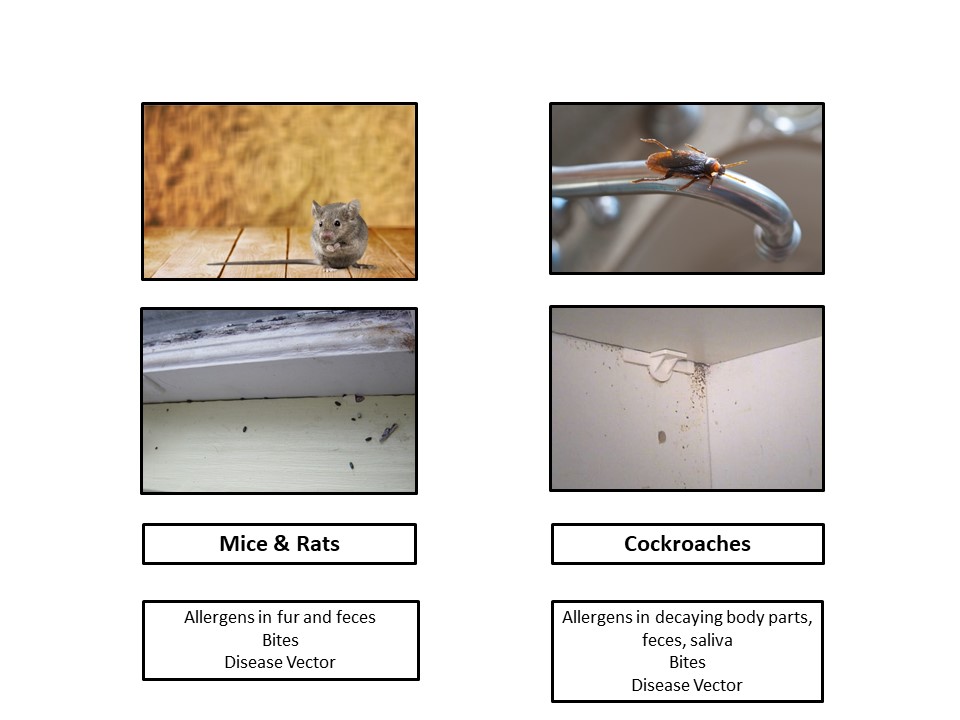Last Updated: February 27, 2019
Description
Pests: Mice, Rats, and Cockroaches
Images: purchased or NCHH image
Big Idea: Now we will cover rodents (mice/rates) and cockroaches to understand what an infestation looks like and health impacts on humans.
Talking Points:
- Understanding pests’ sources of food and shelter is important because the removal of these sources should be the first line of prevention/elimination of pests.
- Mice/rats are omnivores. Mice can squeeze through holes ¼ inch in diameter and trail urine as they walk. Feces looks like dark grains of rice and collects in cupboards, along floorboards, on windowsills, etc.
- Cockroaches can live almost a month without food and about two weeks without water. Cockroaches will eat almost anything including plants, food, cardboard, or glue.
- Common locations for cockroaches are in kitchens, bathrooms, crawlspaces, basements, and any place a person eats/drinks frequently.
- Fecal matter is called “frass” and gets smeared on surfaces where cockroaches frequent.
What do pests have to do with allergies and asthma?
- Mice, rats, and cockroaches can be an asthma trigger
- Because of allergens in fur, feces, decaying body parts
- in fact, cockroach allergen is one of the three environmental triggers known to cause asthma in preschool age children (along with dust mites and tobacco smoke)
Sources:
NC Department of Agriculture, ND
Dr. Bed Bug
NC State: Schal Lab
IPM for Homes, Cornell Cooperative Extension, ND
Categories: Pest/Pesticides


